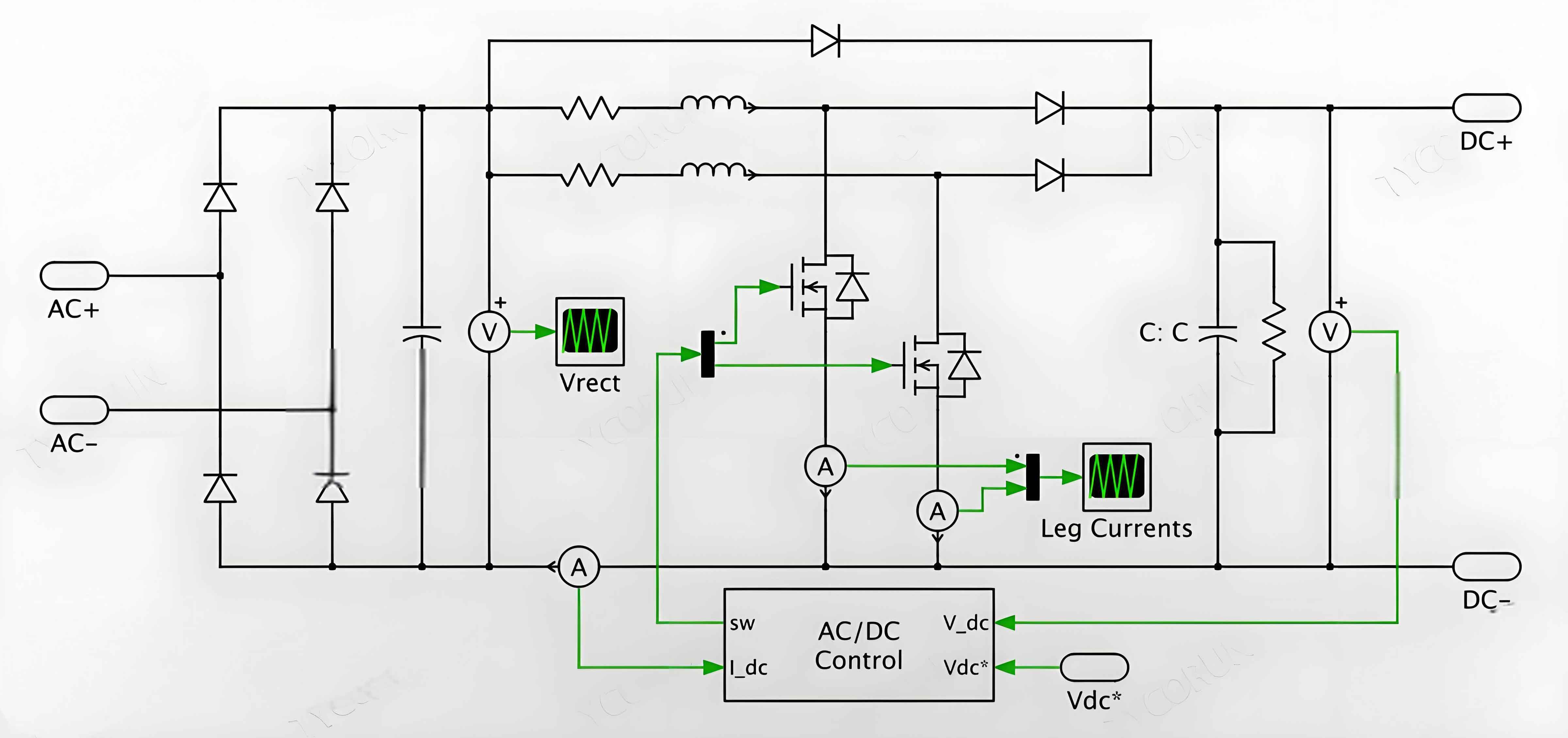This chapter focuses on the parallel control of single-phase inverter power supplies. Parallel operation of solar inverter power supplies can increase power capacity and system reliability, but it requires precise control to ensure uniform load current distribution and avoid circulating currents.

4.1 Introduction
The parallel operation of solar inverter power supplies is an effective way to improve the reliability and capacity of the power supply system. However, issues such as power distribution and circulating currents need to be addressed.
4.2 Power Flow and Droop Control in the Parallel Solar Inverter System
4.2.1 Equivalent Circuit of the Distributed Power Supply System
The equivalent circuit shows the connection of multiple solar inverter power supplies in the distributed power supply system.
4.2.2 Power Flow with Complex Impedance Output
The power flow is analyzed when the output impedance of solar inverter is complex, and the influence of impedance parameters on the power flow is discussed.
4.2.3 Power Flow with Pure Inductive Impedance Output
The case of pure inductive output impedance is analyzed, and the independent control of reactive power and active power by adjusting the voltage amplitude and phase angle is explained.
4.2.4 Power Flow with Pure Resistive Impedance Output
The power flow with pure resistive output impedance is discussed, and the relationship between voltage, current, and power is analyzed.
4.2.5 Power Flow with Pure Capacitive Impedance Output
The power flow with pure capacitive output impedance is studied, and the characteristics of power flow are described.
4.3 Circulating Current Analysis in the Two-Inverter Parallel System
4.3.1 Circulating Current with Complex Impedance
The circulating current is analyzed when the output impedance is complex, and the influence of voltage and phase differences on the circulating current is discussed.
4.3.2 Circulating Current with Pure Inductive Impedance
The circulating current with pure inductive impedance is analyzed, and the control of the circulating current is explained.
4.3.3 Circulating Current with Pure Resistive Impedance
The circulating current with pure resistive impedance is discussed, and the relationship between the circulating current and the voltage difference is analyzed.
4.3.4 Circulating Current with Pure Capacitive Impedance
The circulating current with pure capacitive impedance is studied, and the characteristics of the circulating current are described.
4.4 Output Characteristics of the Single-Phase Inverter
4.4.1 Closed-Loop Output Characteristics
The closed-loop output characteristics of the single-phase inverter with voltage and current dual closed-loop feedback are analyzed.
4.4.2 Equivalent Output Impedance Characteristics
The equivalent output impedance of solar inverter is analyzed, and the influence of control parameters on the impedance is discussed.
4.4.3 Design of Output Impedance Characteristics
The design of the output impedance characteristics is discussed to improve the performance of the parallel system.
4.5 Parallel Control Strategy Based on Output Circulating Current Decoupling
4.5.1 Parallel Control of Single-Phase Inverters
The parallel control method of single-phase inverters is introduced, and the calculation of the active and reactive components of the circulating current is explained.
4.5.2 Circulating Current Decomposition Method Based on Instantaneous Reactive Power Theory
The instantaneous reactive power theory is used to decompose the output current of solar inverter into active and reactive components.
4.5.3 Simulation Analysis of Output Current Decomposition in Single-Phase Inverters
The simulation results show that the proposed current decomposition method has faster dynamic response and better stability.
4.5.4 Experimental Results
The experimental results verify the effectiveness of the parallel control strategy in reducing the circulating current and improving the load sharing performance.
In summary, this chapter analyzes the power flow and circulating current in the parallel solar inverter system, and proposes a parallel control strategy based on output circulating current decoupling. The experimental results show that the strategy can effectively improve the performance of the parallel system.
The following is a summary of the key points in tabular form:
| Topic | Key Points |
|---|---|
| Power Flow and Droop Control in the Parallel Inverter System | – Equivalent circuit of the distributed power supply system – Power flow with different output impedance types – Droop control strategies for different impedance types |
| Circulating Current Analysis in the Two-Inverter Parallel System | – Circulating current with different impedance types – Relationship between circulating current and voltage/phasedifference |
| Output Characteristics of the Single-Phase Inverter | – Closed-loop output characteristics – Equivalent output impedance characteristics – Design of output impedance characteristics |
| Parallel Control Strategy Based on Output Circulating Current Decoupling | – Parallel control of single-phase inverters – Circulating current decomposition method based on instantaneous reactive power theory – Simulation analysis of output current decomposition – Experimental results |
